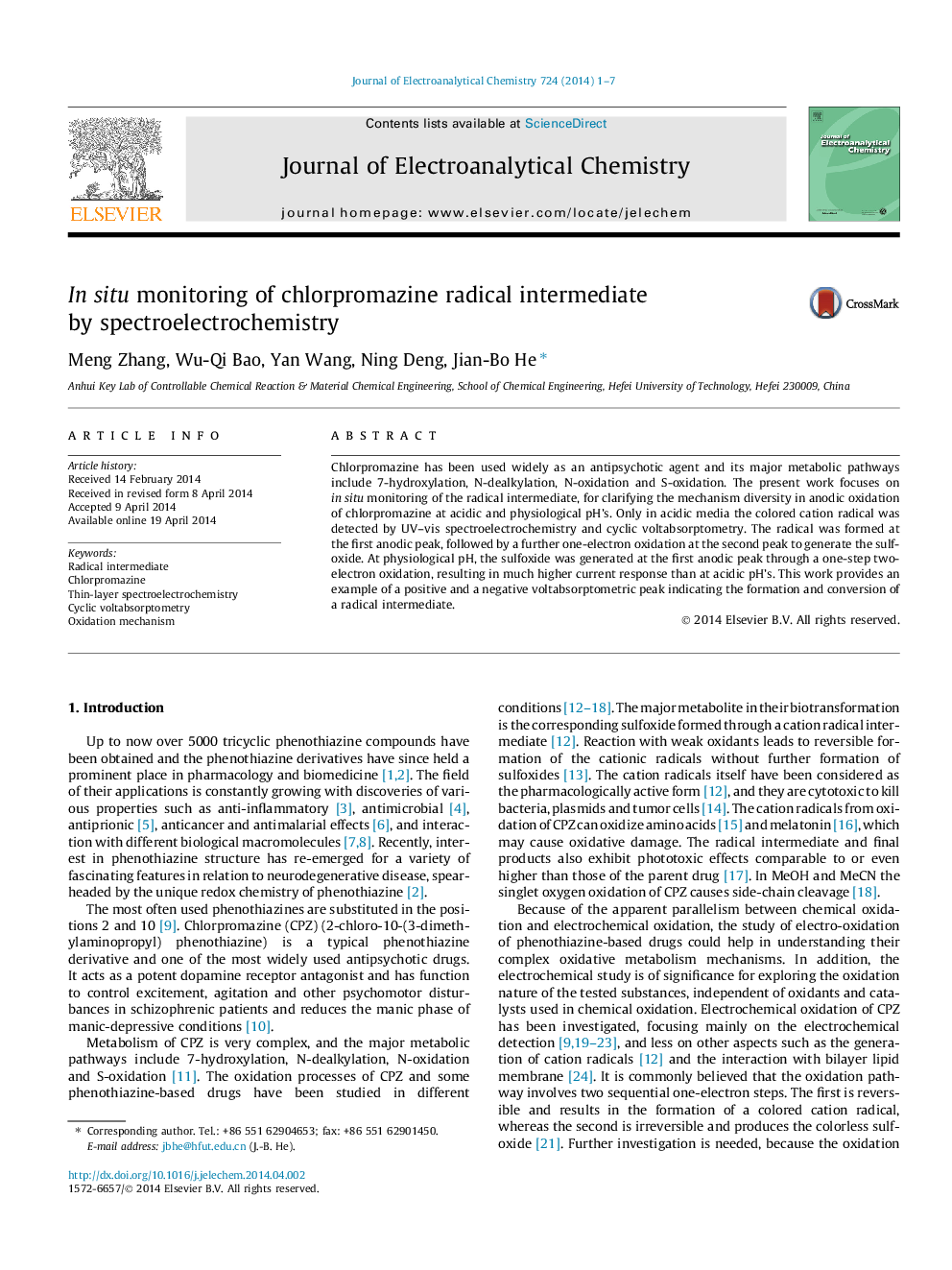| Article ID | Journal | Published Year | Pages | File Type |
|---|---|---|---|---|
| 218834 | Journal of Electroanalytical Chemistry | 2014 | 7 Pages |
•In situ monitoring of radical intermediate in redox of chlorpromazine.•High anodic current responses of chlorpromazine at physiological pH.•A positive and a negative voltabsorptometric peak due to formation and conversion of intermediate.•A pH-dependent mechanism proposed for oxidation of chlorpromazine.
Chlorpromazine has been used widely as an antipsychotic agent and its major metabolic pathways include 7-hydroxylation, N-dealkylation, N-oxidation and S-oxidation. The present work focuses on in situ monitoring of the radical intermediate, for clarifying the mechanism diversity in anodic oxidation of chlorpromazine at acidic and physiological pH’s. Only in acidic media the colored cation radical was detected by UV–vis spectroelectrochemistry and cyclic voltabsorptometry. The radical was formed at the first anodic peak, followed by a further one-electron oxidation at the second peak to generate the sulfoxide. At physiological pH, the sulfoxide was generated at the first anodic peak through a one-step two-electron oxidation, resulting in much higher current response than at acidic pH’s. This work provides an example of a positive and a negative voltabsorptometric peak indicating the formation and conversion of a radical intermediate.
Graphical abstractFigure optionsDownload full-size imageDownload as PowerPoint slide
